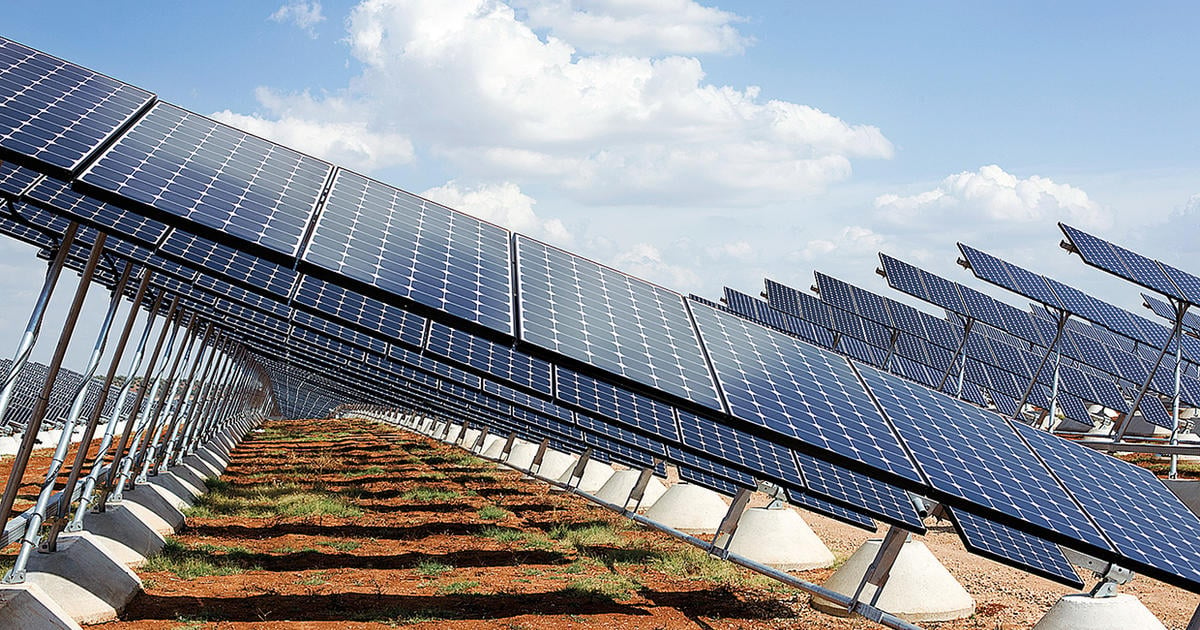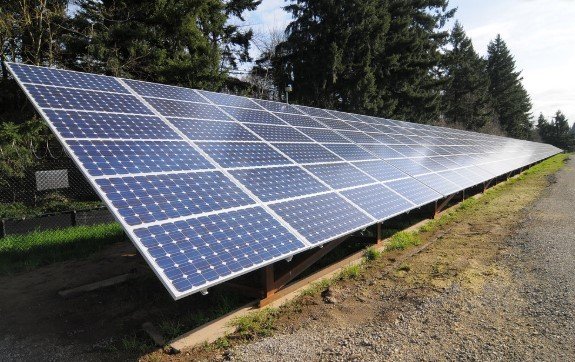What are some examples of solar energy?
Solar energy examples include rooftop PV systems (6kW generates 900kWh/month), solar water heaters (saving 50-70% electricity), solar street lights (100W LED for 12hrs), off-grid cabins (3kW system with batteries), and solar-powered EV chargers (7kW adds 30 miles/day).
Solar Panels on Roofs
Installing solar panels on rooftops is one of the most common and practical ways to use solar energy. In the U.S., residential solar installations grew by 34% in 2023, with over 4 million homes now using rooftop solar. A typical 6 kW system costs between 15,000and25,000 before incentives, but federal tax credits can cut that by 30%, and many states offer additional rebates. These systems usually pay for themselves in 6 to 10 years, thanks to 1,000to2,500 in annual electricity savings.
Most residential solar panels are monocrystalline or polycrystalline, with efficiencies ranging from 15% to 22%. A standard 60-cell panel measures about 3.25 ft x 5.5 ft and produces 300 to 400 watts under ideal conditions. Roof space is a key factor—a 6 kW system needs roughly 300 to 450 sq ft of unshaded area. South-facing roofs with a 20- to 30-degree tilt perform best, but east/west setups still achieve 85-90% of peak output.
Weather impacts performance—solar panels lose about 0.5% efficiency per year and operate best at 77°F (25°C). Extreme heat (above 95°F) can reduce output by 10-25%, while snow cover may halt production entirely until melting. Modern systems include microinverters or power optimizers, boosting efficiency by 5-15% compared to older string inverter setups.
Maintenance is minimal—rain usually keeps panels clean, but in dusty areas, occasional washing (1-2 times per year) prevents 5-10% efficiency drops. Most panels last 25-30 years, with warranties guaranteeing 80% output after 25 years. Cell storage adds 10,000−20,000 but lets homeowners use solar power at night, increasing self-consumption from 30% to 70% or more.
For homeowners, the biggest advantage is locking in energy costs—solar eliminates 90-100% of grid dependence, protecting against rising utility rates (which increase 2-5% annually in many regions). Net metering policies, available in 38 states, credit excess solar power at retail rates, further improving ROI.

Solar Water Heating
Solar water heaters are a high-efficiency, low-maintenance way to cut water heating costs—which account for 18-25% of home energy use in the U.S. These systems typically cost 3,000to7,000 installed but slash water heating bills by 50-80%, paying for themselves in 4-8 years. In sunny climates like Arizona or Florida, they can provide 90% of a household’s hot water, while colder regions (e.g., New York or Michigan) still see 40-60% solar coverage.
Key Modules and How They Work:
· Collectors: Most systems use flat-plate (70% market share) or evacuated tube collectors (30%). Flat-plate models run at 40-60% efficiency, while evacuated tubes hit 50-70% but cost 20-40% more.
· Storage Tank: Holds 40-80 gallons for a typical home, with 2-3x more capacity than standard water heaters to account for variable sunlight.
· Pump and Controller: Moves water/glycol at 1-2 gallons per minute, with sensors that activate when collector temps exceed tank temps by 15-20°F.
Climate drastically affects performance. In areas with 250+ sunny days/year, solar water heaters can deliver 120°F water year-round. In cloudy climates, backup electric/gas heating kicks in 30-50% of the time during winter. Freeze protection is critical—systems in cold regions use glycol fluid (costing 200−500 more) instead of water to prevent pipe damage below 32°F.
Maintenance is minimal:
· Annual inspections (100−200) check for pump failures or fluid degradation.
· Collectors need cleaning 1-2 times/year (dust/snow can reduce efficiency by 15-30%).
· Anode replacement every 5 years (50−100) prevents tank corrosion.
Financial incentives improve ROI. The U.S. federal tax credit covers 30% of installation costs, and states like California add 1,000−3,000 rebates. In Hawaii, where electricity costs $0.35/kWh, solar water heaters pay back in 3-5 years.
Solar-Powered Street Lights
Solar street lights are becoming the go-to solution for cities and towns looking to cut energy costs while maintaining reliable nighttime lighting. A single solar street light costs 200−800 installed, which is 2-3x more upfront than traditional grid-powered lights. But with zero electricity bills and minimal maintenance, they pay for themselves in 3-5 years. In the U.S., over 2 million solar street lights are now in operation, with installations growing 15-20% annually as LED efficiency improves and cell costs drop.
How They Work:
· Solar Panel: Typically 50W-150W, mounted on top of the pole at a 30°-45° angle for optimal sun exposure.
· Cell Storage: Lithium-ion (80% of new installations) stores 12V-24V, lasting 5-7 years before replacement.
· LED Fixture: Consumes 30-60W while delivering 8,000-12,000 lumens (equivalent to a 150W-250W metal halide bulb).
· Smart Controller: Adjusts brightness (30-100% output) based on motion detection or preset schedules.
Performance hinges on location. In sunny regions (e.g., Arizona), solar street lights operate at 90-95% uptime year-round. In cloudy areas (e.g., Seattle), backup cell capacity ensures 4-5 nights of operation without direct sunlight. Temperature extremes matter too—lithium batteries lose 15-20% efficiency below 32°F and degrade faster above 95°F.
Key advantages over grid-powered lights:
· No trenching or wiring cuts installation costs by 50-70% (just a concrete base and pole).
· Automatic dusk-to-dawn operation with zero grid dependence.
· 10-15 year lifespan for the entire system (vs. 5-8 years for conventional street lights).
Maintenance is minimal but critical:
· Solar panels need cleaning every 3-6 months (dust can reduce efficiency by 20-30%).
· Cell replacements cost 100−300 every 5-7 years.
· LEDs last 50,000+ hours (about 12 years at 12 hours/day).
Solar Chargers for Phones
Solar phone chargers have gone from novelty gadgets to essential gear, especially for outdoor enthusiasts and travelers. The global market hit 425 million in 2023 ,with 12−1530-$80, weighs 8-16oz, and folds down to 6x4 inches—small enough for any backpack. In ideal sunlight, these can charge a 3,000 mAh phone cell in 2-3 hours, though real-world conditions often stretch that to 4-6 hours.
Efficiency varies wildly by technology:
Type | Efficiency | Peak Output | Best Use Case |
Monocrystalline | 22-25% | 18-25W | Full-day hiking |
Polycrystalline | 15-18% | 10-15W | Casual outdoor use |
Thin-film | 10-12% | 5-8W | Emergency backup |
Sunlight intensity is the biggest factor. At 1,000W/m² (noon in summer), a 20W panel delivers full power. But under cloudy conditions (200-300W/m²), output drops 70-80%. Angle matters too—tilting the panel 30° toward the sun boosts efficiency 15-20% versus laying it flat.
Cell storage separates good chargers from great ones. Models with 5,000-10,000mAh built-in batteries (50−120) solve two problems: they store solar energy for nighttime use, and they prevent phone cell damage from inconsistent solar input. Without storage, direct solar charging can cause 30-50% energy loss due to intermittent clouds or shadows.
Solar Farms in Fields
Utility-scale solar farms are transforming marginal farmland and deserts into power plants, with the global capacity surpassing 1.2 terawatts (TW) in 2024—enough to power 250 million homes. A typical 100MW solar farm spans 500-700 acres, costs 80−120 million to build, and generates 180-220 gigawatt-hours (GWh) annually—equivalent to 40,000 barrels of oil. The U.S. leads with 85GW of installed solar farm capacity, followed by China (78GW) and India (24GW).
Key components determine performance and ROI:
Module | Specification | Impact |
Solar Panels | 400W-550W monocrystalline | 20-22% efficiency |
Mounting | Single-axis tracking (+25% output) vs fixed-tilt | 0.05−0.08/W cost difference |
Inverters | Central (96% efficiency) vs string (98%) | 2-3% more energy yield |
Land Use | 5-7 acres/MW | 30% less space than 2010 designs |
Location makes or breaks economics. Farms in Arizona's Sonoran Desert (6.8 kWh/m²/day solar radiation) produce 35% more power than identical setups in New York (4.2 kWh/m²/day). Temperature plays a crucial role too—for every 1°F above 77°F, panel efficiency drops 0.3-0.5%. That's why solar farms in Minnesota often outperform those in Texas despite less sunlight—cooler ambient temps boost output 5-8%.
Construction timelines have compressed dramatically:
· Permitting takes 12-24 months (down from 36+ months in 2015)
· Installation averages 6-9 months for a 100MW farm
· Grid interconnection delays now cause 80% of project slowdowns
Financials reveal why investors flock to solar:
· Levelized cost of energy (LCOE) fell to 24−32/MWh—cheaper than natural gas (45−60/MWh)
· Power purchase agreements (PPAs) lock in rates for 15-25 years at 0.02−0.04/kWh
· Tax equity structures deliver 12-15% annual returns after accounting for 30% ITC tax credit

Solar-Powered Cars
Solar-powered cars are no longer just college engineering projects—they're hitting mainstream roads with real-world performance. The Lightyear 0, the first production solar car, boasts 44 miles of free daily range from its 5m² of solar panels, adding up to 6,000-9,000 miles/year in sunny climates. At 250,000, it's priced like a luxury sedan, but mass-market models like the Aptera (25,900) promise 40 free miles/day using 3m² of 24%-efficient solar cells. The math works: at 0.15/kWh electricity rates, solar panels save 500-800/year compared to plug-in charging alone.
Physics dictates hard limits though. Even with perfect 1,000W/m² sunlight, a car's roof space maxes out at 1.2-1.5kW of solar power—just 15-20% of what's needed to cruise at 60mph. That's why current models rely on cell buffers (40-100kWh packs) and ultra-efficient designs (0.13-0.15 drag coefficient). The Sono Sion, a solar-hybrid hatchback launching in 2024, demonstrates the compromise: its 456 solar cells add 70-150 miles/week, but still require plug-in charging for full functionality.
Weather wreaks havoc on performance. Cloudy days slash solar harvest by 60-80%, while winter sun angles in Boston (21° in December) yield 40% less energy than summer angles in Phoenix (78° in June). Heat is another enemy—solar panel efficiency drops 0.3%/°F above 77°F, and cabin cooling consumes 300-500W that could otherwise power the drivetrain.
Maintenance presents unique challenges. Solar arrays need quarterly cleaning (dust reduces output 15-25%), and parking in shade defeats the purpose. Unlike rooftop panels lasting 25+ years, automotive solar suffers from vibration fatigue, with most warranties covering 8-10 years or 100,000 miles. Repair costs run 800−1,200 per panel due to integrated wiring and curvature matching.
The cell-solar balance is critical. Aptera's 100kWh model stores enough energy for 1,000 miles, but takes 30 days to recharge via solar alone. Realistically, owners plug in 2-3 times/month even in optimal conditions. For urban commuters driving 30 miles/day, solar can cover 80-90% of needs, but road trippers still face 300-500% longer charging times versus DC fast chargers.